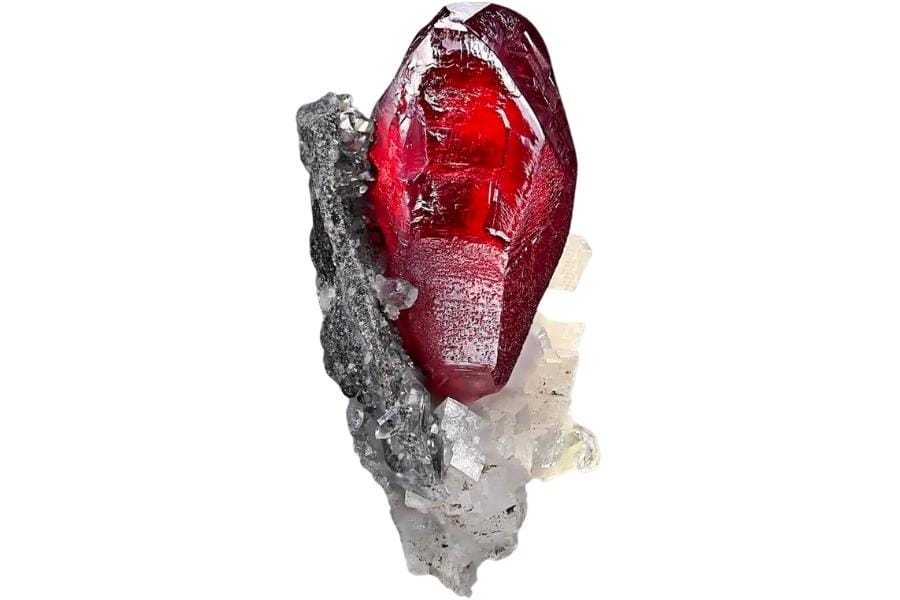Cinnabar’s mesmerizing beauty and vibrant red hue make it a sought-after mineral. Its bright red color often catches the eye from afar, making it a striking presence amidst natural formations.
In this article, we’ll help you learn how to find cinnabar and explore what makes this specimen so interesting. How will this help you, you ask?
Well, initially, this mineral can resemble ordinary rocks or dark mineral deposits, so you need to understand how to identify cinnabar to be successful in your search.
If you’re eager to go on a cinnabar hunting adventure, you’re in the right place! We’ll guide you to the locations where it’s most commonly found. We’ll also share invaluable tips for identifying cinnabar in the field, ensuring you don’t miss it out.
What Cinnabar Is

Cinnabar is known for its brilliant red color and intriguing formation process. It’s composed mainly of mercury sulfide, making it a significant source of mercury, historically used in various applications.
When hot, mineral-rich fluids rise from deep within the Earth’s crust, they encounter cooler conditions near the surface. As these cool down, they deposit their mineral content, which can include cinnabar, along with other minerals.
Over time, these deposits crystallize, creating the vibrant red cinnabar crystals we admire.
Cinnabar is often found in areas with volcanic activity, such as hot springs, geothermal regions, and mines associated with hydrothermal systems.
Some well-known cinnabar deposits are found in China, Spain, Mexico, and the United States.
The different types of cinnabar
Did you know that cinnabar comes in different variations of red? That’s right! And if you want to learn how to find cinnabar, a key step is getting familiar with the different colors it comes in, such as:
Red cinnabar
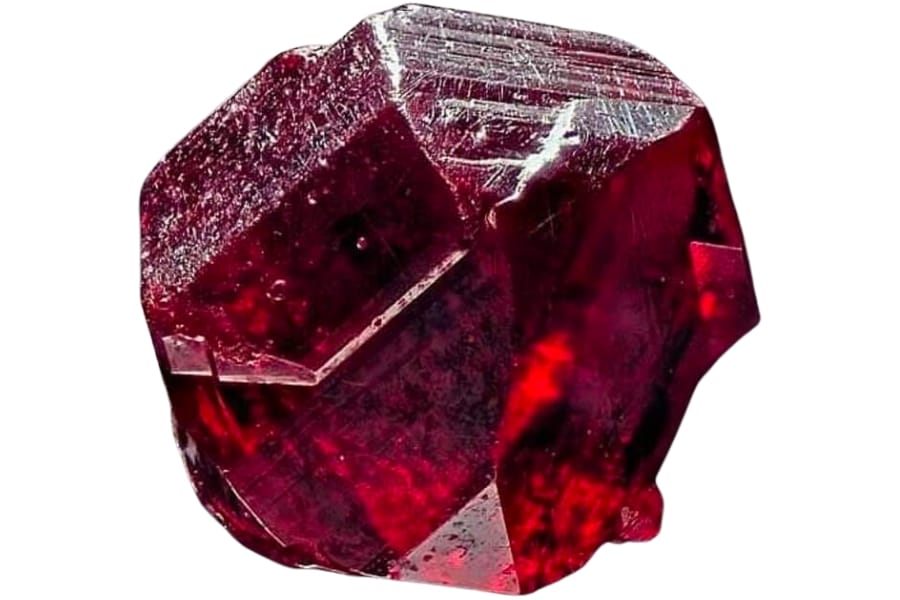
Red cinnabar stands out among its counterparts due to its striking and vibrant hue. It has a distinct crystalline lattice that enhances its color intensity, creating a stunning deep red appearance.
While cinnabar itself is primarily composed of mercury sulfide, the vivid red color in this variety is a result of a unique arrangement of its crystal structure.
Red cinnabar is often found in regions with volcanic activity and hydrothermal systems. These areas include places like hot springs, geothermal regions, and cinnabar mines.
For centuries, this has been used for various purposes, including as a pigment in traditional art, especially in China.
Brownish-red cinnabar
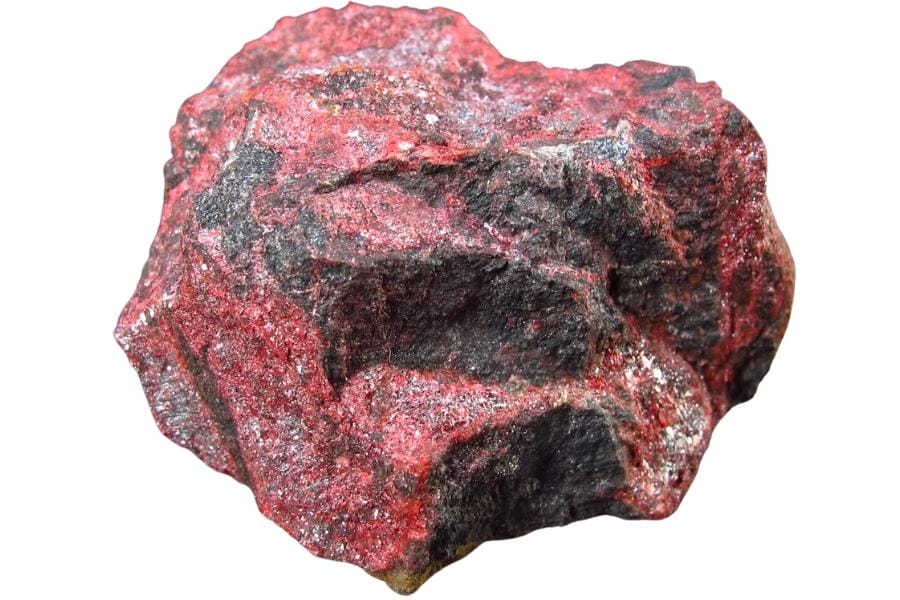
Brownish-red cinnabar exhibits a unique blend of colors, ranging from deep brown to reddish hues.
This variation is often due to the presence of impurities or slight alterations in the crystal structure.
It’s commonly discovered in areas with volcanic activity and hydrothermal systems, just like its bright red counterpart.
What makes brownish-red cinnabar especially intriguing is its historical use in traditional art. In some cultures, it was valued for its subtle and earthy tones, which were employed in paintings and decorative items.
Dark red cinnabar
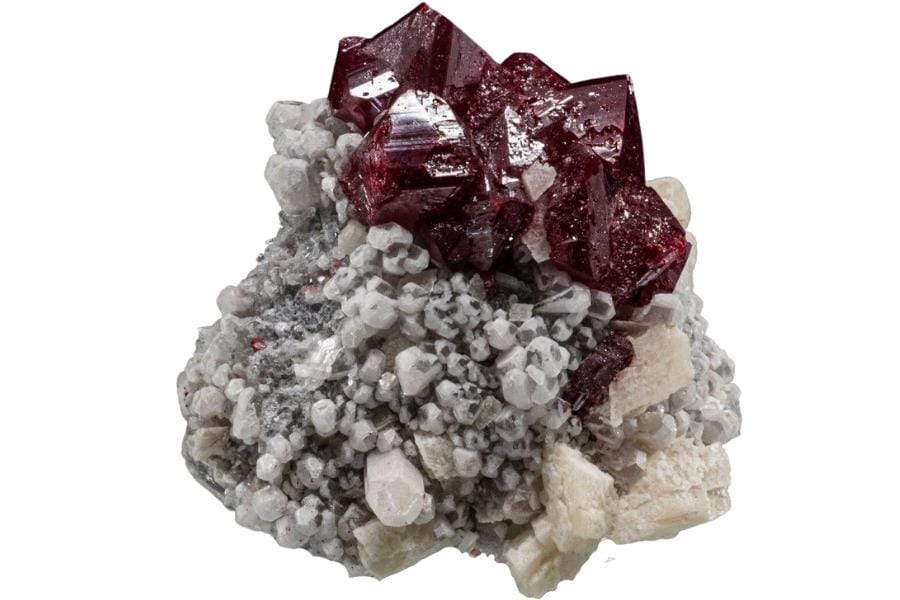
Dark red cinnabar is a remarkable variety that captivates the eyes with its rich and intense crimson hue. What makes it stand out from other colors of cinnabar is the depth and purity of its red tone.
This captivating coloration is a result of the mineral’s crystal structure, which allows it to absorb and reflect light in a way that creates a striking dark red appearance.
Dark red cinnabar can be found in the same settings as its brighter red counterpart, offering a stunning contrast in color within the same environment.
Throughout history, cinnabar in its various forms, including the dark red variety, has been prized for its uses. It was a crucial source of mercury, employed in processes like gold mining and medicine.
Reddish-orange cinnabar
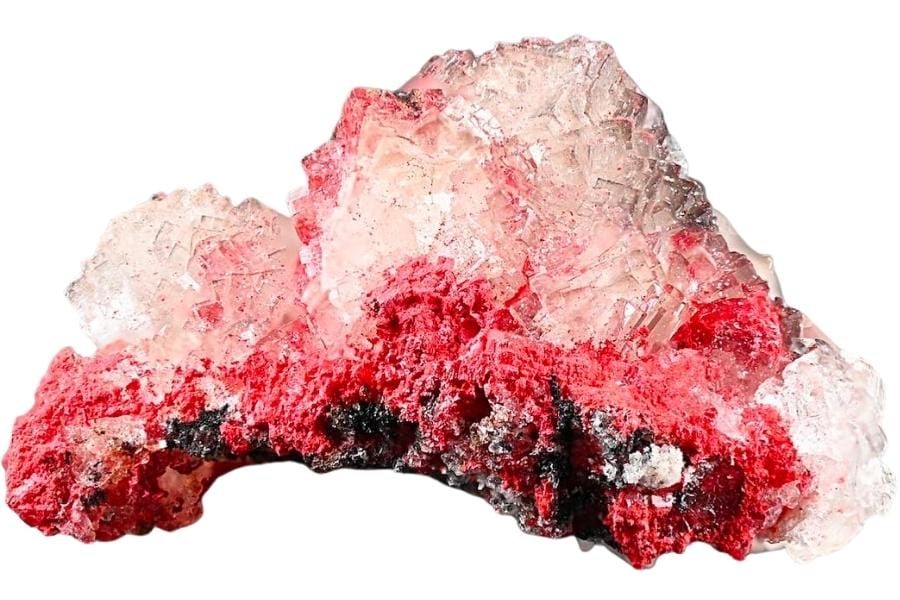
While cinnabar, in general, is primarily composed of mercury sulfide, the reddish-orange kind displays a distinctive blend of colors, ranging from vibrant reds to warm orange tones.
This variation is often due to the presence of trace impurities or variations in the crystal structure.
Historically, the unique color of reddish-orange cinnabar has made it a sought-after choice for artists and craftsmen. It has been employed in art and cultural practices, showcasing its rich cultural significance.
It has been used as a pigment in art, particularly in traditional Chinese paintings.
Where To Find Cinnabar
Cinnabar isn’t exactly a dime a dozen, so finding it requires a bit more research, experience, and guidance. If you’re eager to start your cinnabar hunting but don’t know where to look, below are our top recommendations:
Mount Diablo, Contra Costa County, California
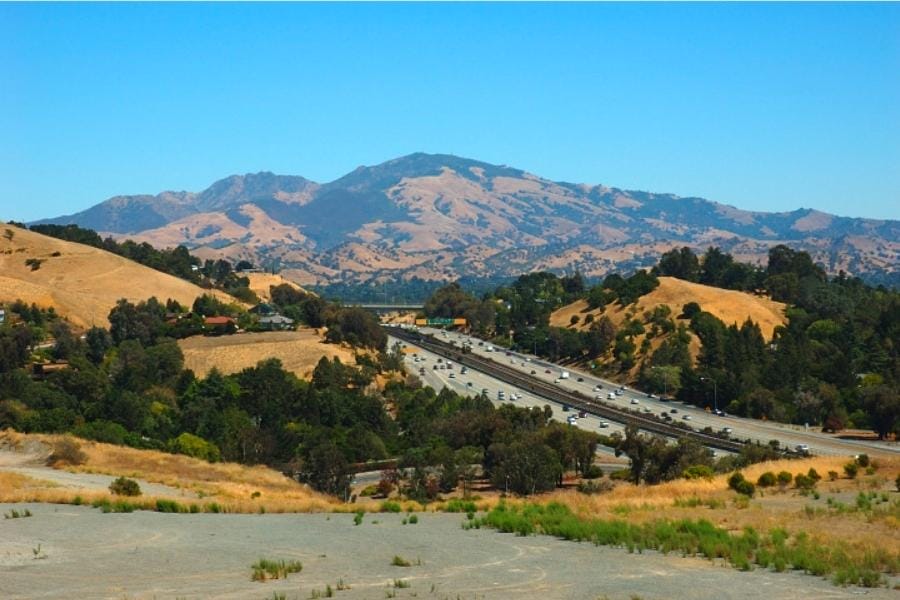
Rising over 3,849 feet above sea level, Mount Diablo’s iconic peak offers a unique opportunity to explore its diverse geology and potentially discover cinnabar.
Its terrain is a geological mosaic, featuring a mix of rock types that date back millions of years. It’s part of the Diablo Range, a region shaped by tectonic forces and volcanic activity.
The mountain’s rocks include sandstones, shales, and serpentinite, which offer a rich tapestry for geology enthusiasts to study.
Reddish-orange to deep red cinnabar has been found in the vicinity of Mount Diablo. Its volcanic history and hydrothermal activity have created the ideal conditions for this mineral’s formation.
Fern Hill Cinnabar Mine, Lewis County, Washington
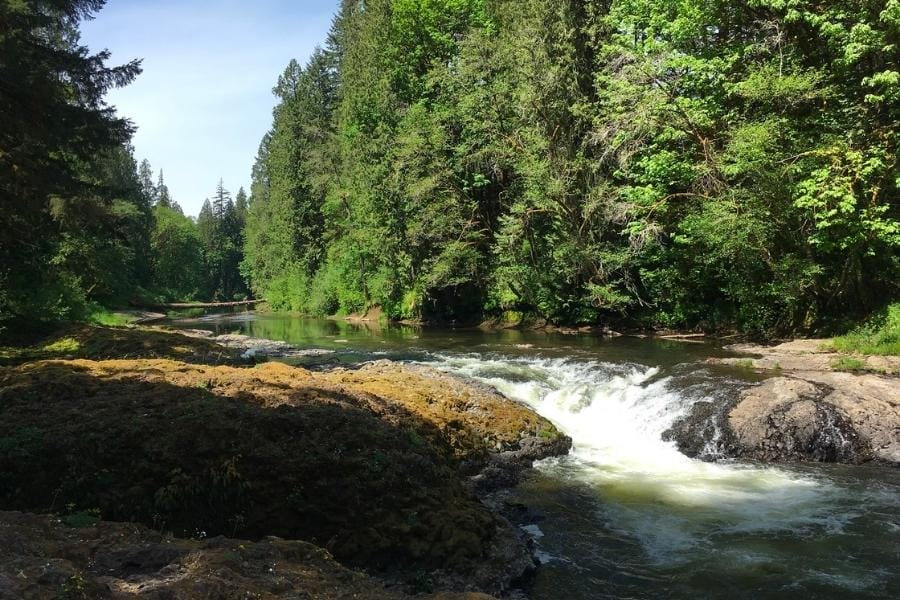
Fern Hill Cinnabar Mine, nestled in the picturesque state of Washington, is a geological gem and historic site with a promise of cinnabar treasures.
The terrain surrounding it is characterized by its volcanic origins. It sits within the Cascade Range, an area known for its geological diversity shaped by volcanic activity.
Cinnabar finds its home in areas with hydrothermal activity and mineral-rich fluids. The geological history of the Cascade Range has provided the ideal conditions for its formation.
Fern Hill, throughout the years, has yielded intriguing cinnabar specimens over the years.
Rand Mine, Elko County, Nevada
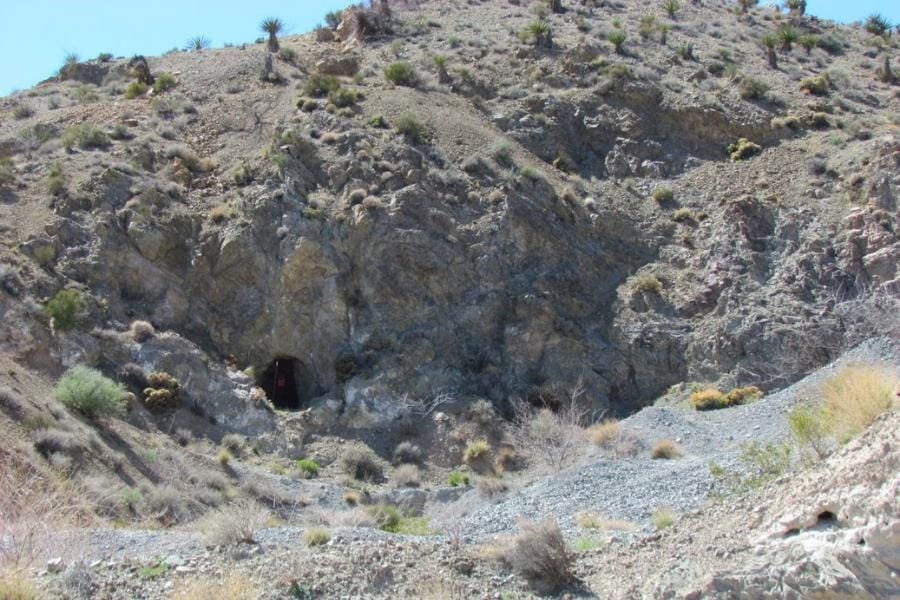
Rand Mine is a captivating destination that’s situated within the Great Basin region. It offers a rich terrain and geological history that make it an excellent spot to search for cinnabar.
Its terrain is marked by the presence of various sedimentary and volcanic rocks, a testament to the geological diversity of the area.
Cinnabar often forms in locations with hydrothermal activity and the right mix of mineral-rich fluids. The geological history of Rand Mine, including its volcanic past, makes it a promising location for finding cinnabar.
Mines at Marysvale, Piute County, Utah
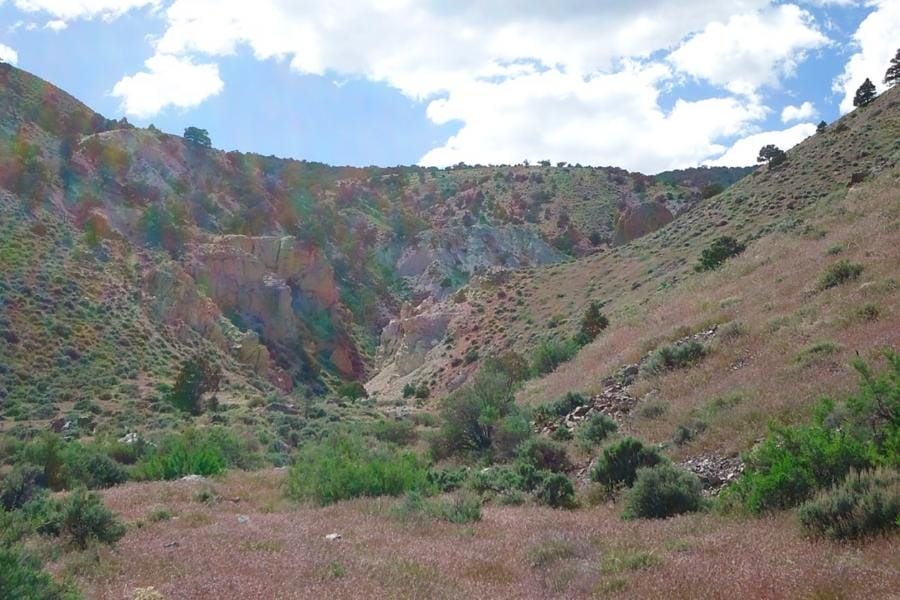
The mines at Marysvale have a rich geological landscape that makes it an excellent spot to hunt for cinnabar.
Nestled in the rugged terrain of the Tushar Mountains, Marysvale’s geological history and unique features provide the perfect conditions for the formation of cinnabar deposits.
The terrain around Marysvale is a geological wonderland, with a mix of sedimentary and volcanic rocks.
Cinnabar has been discovered here over the years. Its striking, vibrant red hues make it a captivating find in this beautiful and challenging landscape.
Socrates Mine, Sonoma County, California
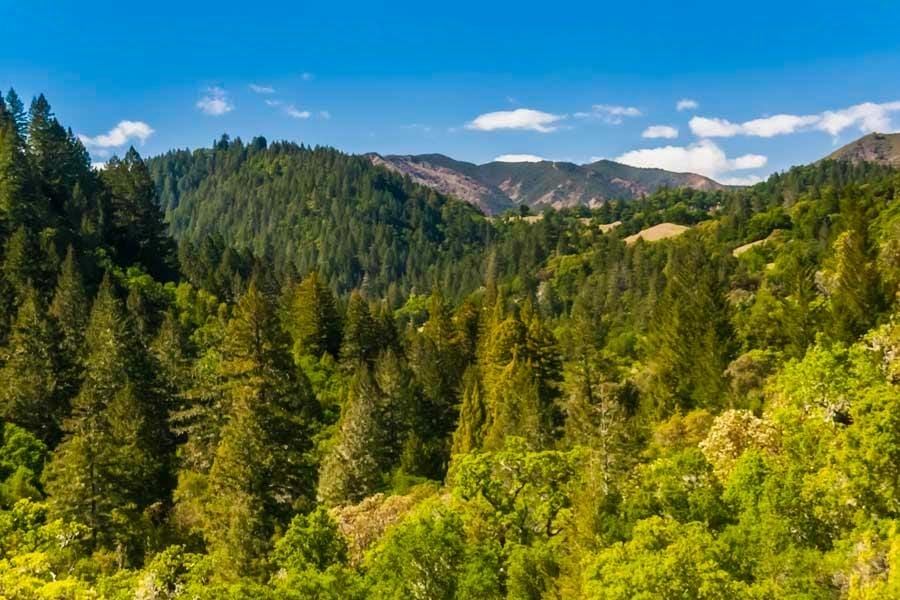
Situated in the renowned Clear Creek Mining District, the geology and terrain of Socrates Mine provide ideal conditions for the occurrence of cinnabar.
It’s marked by its unique mix of sedimentary, volcanic, and metamorphic rocks, showcasing the geological complexity of the area.
The geological history of Socrates Mine, including its association with ancient volcanic activity, creates a promising environment for cinnabar deposits.
If you want to embark on a cinnabar-hunting adventure, don’t leave out Socrates Mine in your itinerary.
How To Identify Cinnabar Once You Find Them
Once you’re in the areas you’ll explore to find this mineral, you should know how to identify cinnabar and tell it apart from other rocks and minerals.
Below are some of the traits of cinnabar from the inside out:
What cinnabar looks like on the outside
If you’re observing cinnabar from the outside, you’ll observe the following characteristics:
Vibrant to deep red color
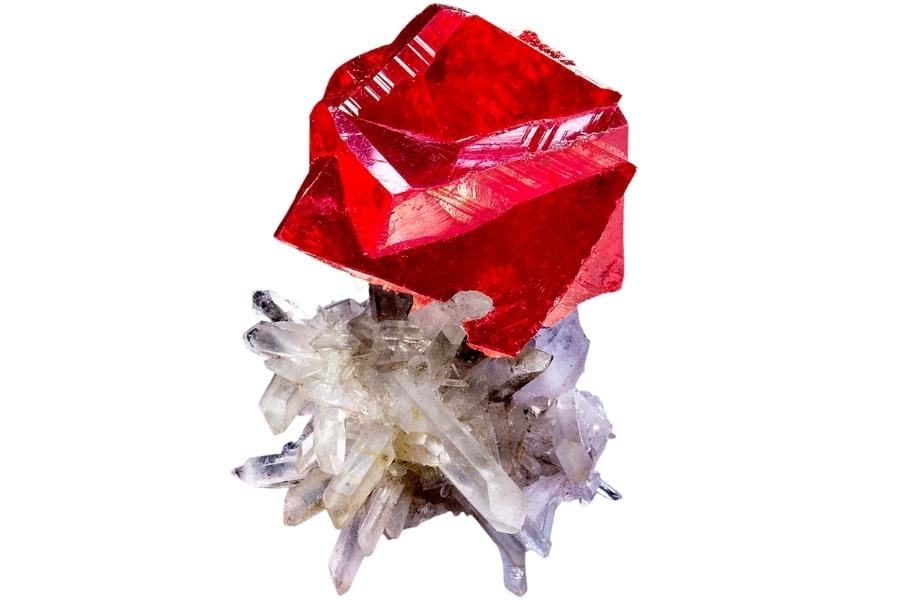
The vibrant to deep red color of cinnabar is its most distinctive and visually striking feature, making it relatively easy to identify in the field.
This intense red hue is often described as being similar to the color of a bright red apple or a stop sign.
When you encounter a mineral specimen with this red coloration, it’s a strong indication that you might be looking at cinnabar.
To further confirm the presence of cinnabar, you can perform a streak test in the field. By scratching the mineral on an unglazed porcelain streak plate, cinnabar will leave behind a telltale red streak.
Shiny or submetallic luster
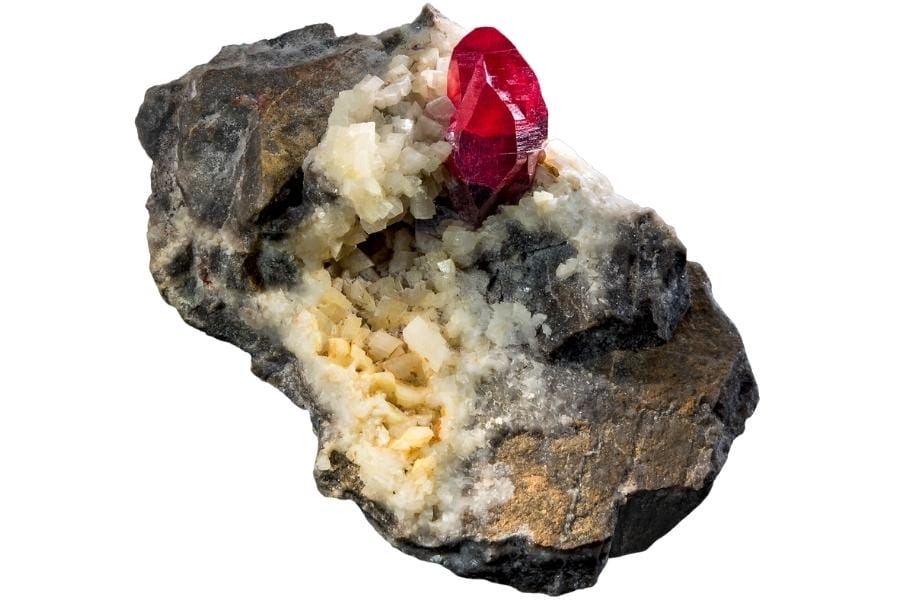
Cinnabar’s shiny and sub-metallic luster is another characteristic that will help you identify it in the field.
When you observe cinnabar up close, it reflects light with a glossy sheen, resembling the shine you might associate with a polished metal surface. This distinctive luster sets it apart from many other minerals.
To use this trait to identify cinnabar, simply inspect the mineral’s surface. If it exhibits a shiny and sub-metallic quality, it’s a strong indication that you might be looking at cinnabar.
This luster can be particularly helpful when combined with other identifying features, such as the mineral’s vibrant red color.
Well-defined crystal structures
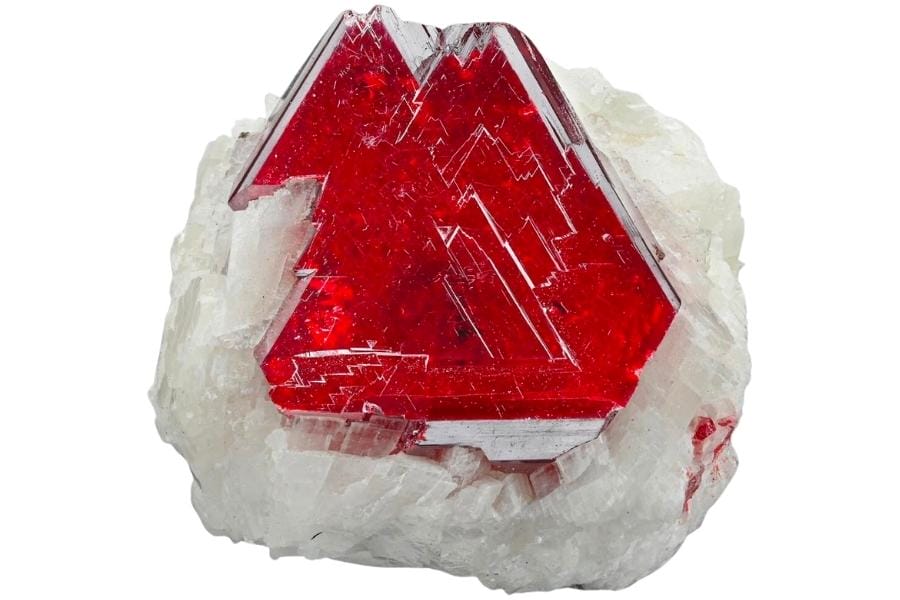
Under closer inspection, you’ll notice that cinnabar often forms distinct crystal shapes, which can include prismatic, tabular, or rhombohedral forms.
These crystalline patterns are a result of the unique arrangement of mercury and sulfur atoms within its crystal lattice.
In the field, this crystal structure can be a valuable clue when you’re trying to identify cinnabar. Look for mineral specimens that exhibit these well-defined crystal shapes, as they are a strong indicator of cinnabar’s presence.
These crystals may stand out amidst the surrounding geological materials due to their specific forms.
What cinnabar looks like on the inside
In case you’re observing a cinnabar that has been cut in the surface, you can observe the following traits from its inside:
Inclusions
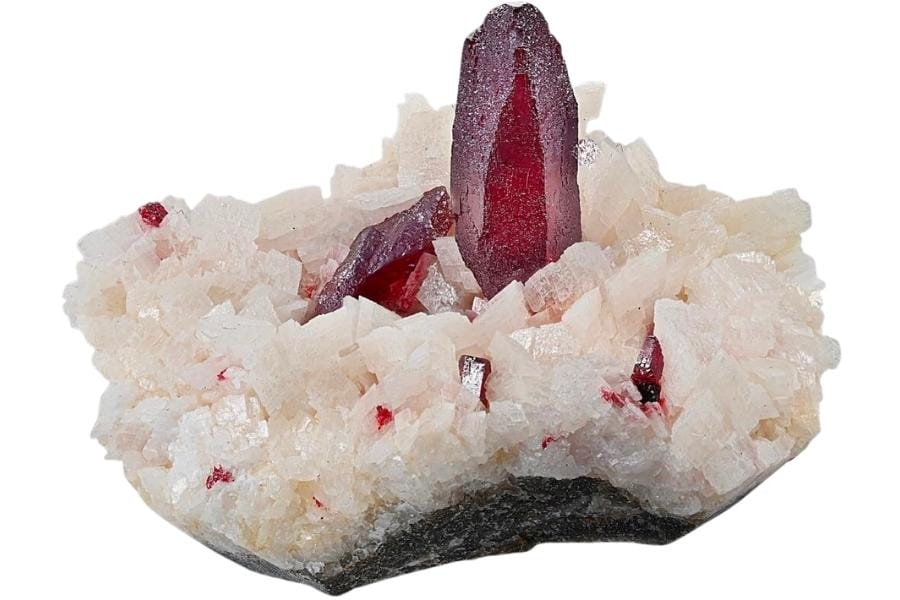
Cinnabar’s inclusions, which are small mineral or material fragments trapped within its crystal structure, can provide valuable clues for identifying it in the field.
When examining cinnabar specimens, keep an eye out for these inclusions, which may appear as contrasting specks or tiny crystals within the matrix.
These inclusions offer insights into the mineral’s formation history and the geological processes that influenced its growth.
For example, if you observe inclusions of quartz or pyrite within cinnabar, it suggests a hydrothermal origin in mineral-rich fluids. These inclusions can help distinguish cinnabar from other red minerals with similar external appearances.
Internal color variations
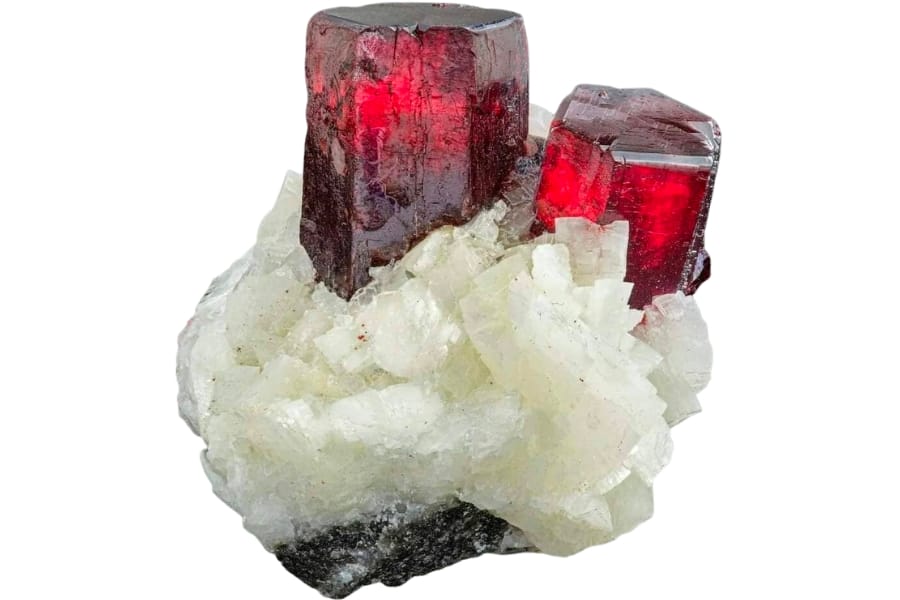
Cinnabar’s internal color variations can be intriguing. While it’s known for its red color, some specimens may exhibit internal color variations ranging from deep red to reddish-brown or even gray.
These variations occur due to slight impurities or alterations in the crystal lattice structure.
Recognizing these internal color differences can be a valuable clue when seeking cinnabar in the field. While the exterior may appear uniformly red, examining a broken or exposed surface may reveal these internal variations.
The presence of different shades of red or even gray within the mineral’s matrix is a strong indication that you’ve encountered cinnabar.
Internal growth patterns
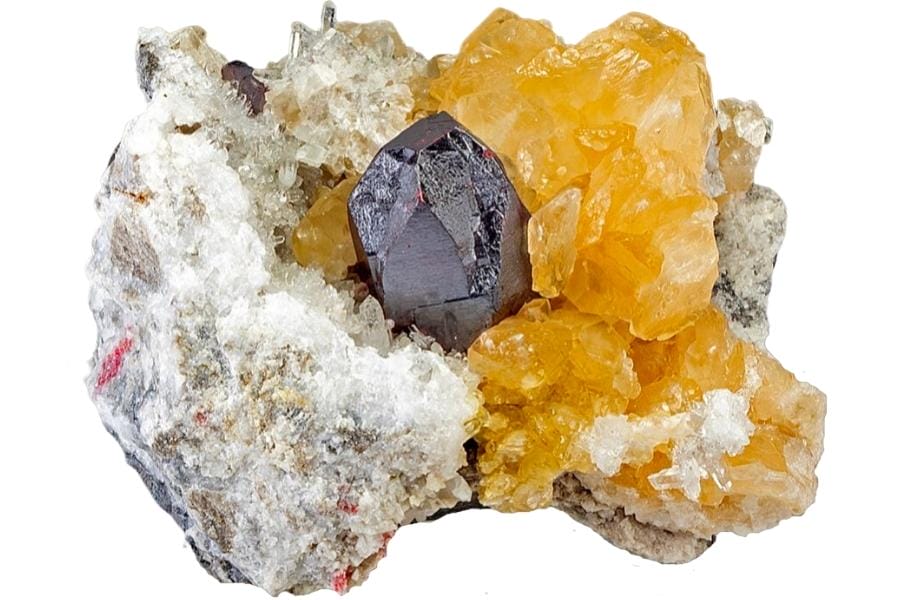
When examining cinnabar specimens, you may notice intriguing internal features such as layering, zoning, or distinct growth patterns. These growth patterns tell the story of how it was formed over time.
In the field, recognizing these can be useful. For instance, if you observe layered growth within a mineral, it suggests periods of alternating conditions during its formation.
Such variations in growth layers can be unique to cinnabar and help distinguish it from other minerals with similar external appearances.
Zoning within cinnabar crystals, characterized by concentric bands of different colors or properties, can also be a telltale sign.
How To Find Cinnabar
Once you’re out and about hunting for cinnabar, here are some quick and easy-to-do tests so you can be sure that what you’re holding is a cinnabar:
Do a simple visual inspection
Cinnabar’s most striking characteristic is its vibrant red to deep red color, which sets it apart from most other minerals and rocks.
When you’re out exploring geological formations or mineral-rich areas, keep an eye out for rocks and mineral specimens with this distinctive hue.
By training your eye to recognize its color, you can quickly identify potential deposits of this mineral.
Carry a small streak plate
A streak plate is an unglazed porcelain tile or a small piece of unglazed ceramic. Its purpose is simple yet essential: it helps confirm the identity of minerals through their streak, a colored mark left made when the mineral is scratched against it.
In the case of cinnabar, this tool is particularly useful.
When you find a mineral specimen that you suspect may be cinnabar, you can use the streak plate to perform a quick streak test. By gently scraping the mineral against the plate, cinnabar will leave a distinct red streak.
Be mindful of associated minerals
Being mindful of associated minerals is a smart approach when searching for cinnabar in the field.
Cinnabar often forms in specific geological settings and conditions, and these associated minerals can serve as helpful clues to its presence.
For instance, it’s commonly found alongside quartz and calcite. If you observe quartz veins or calcite deposits in the rocks you’re exploring, it’s worth investigating further, as cinnabar may be nearby.
The presence of sulfide minerals, such as pyrite, can also be a promising sign. Both minerals form under similar hydrothermal conditions.

